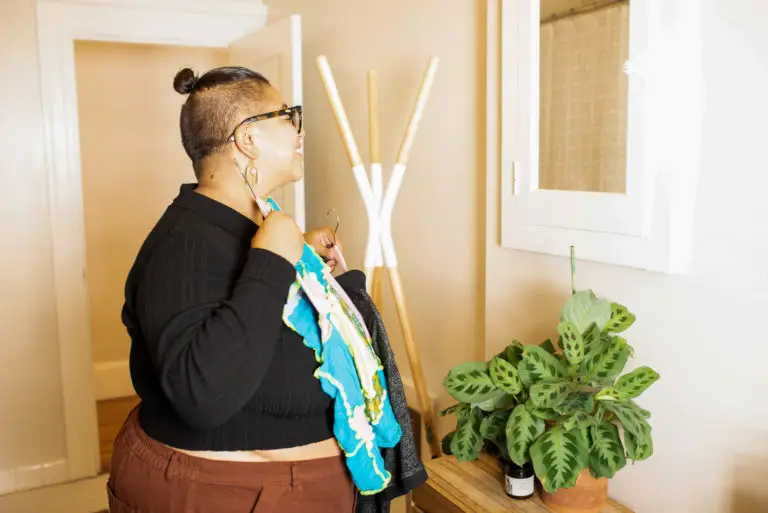Do bathroom bans keep people safe? No. The claim that banning trans people from public restrooms keeps others safe is not based on fact. It is rooted in transphobia and fear, not evidence. The truth is, these laws don’t make anyone safer. Instead, they increase harm, create confusion, and put many people at greater risk, not just trans folks.
Let’s break it down.
Join thousands of trans and non-binary folks getting expert gender-affirming care with Plume.
Fiction: Bathroom bans protect women and children
This claim has been used for years to justify anti-trans legislation, but the data simply doesn’t support it. In reality, there is no evidence that allowing trans people to use restrooms that align with their gender increases the risk of harassment, assault, or any other public safety threat.
A peer-reviewed study conducted by the Williams Institute at UCLA School of Law, published in Sexuality Research and Social Policy, examined cities and states with gender-inclusive public accommodation laws. Researchers found no increase in bathroom-related crimes after these laws were passed (Hasenbush et al., 2018). In other words, when trans people are allowed to use the correct bathroom, public safety does not suffer.
This finding is backed up by a Media Matters report that interviewed law enforcement officials, school administrators, and anti-sexual violence experts in 16 states with inclusive policies. None of them reported any increase in public safety incidents tied to trans people using restrooms.
In fact, leading organizations in the fight against gender-based violence, including the National Task Force to End Sexual and Domestic Violence, have spoken out against these bans. They argue that laws targeting trans people distract from real efforts to prevent violence and instead make vulnerable people less safe.
So let’s be clear: trans people are not a threat in restrooms. We’re people trying to go to the bathroom and move on with our day, just like everyone else. The real danger comes from creating laws that give others permission to harass or police those who they think don’t belong.
That’s not safety. That’s surveillance and discrimination, and we all deserve better.
Fact: Bathroom bans cause harm
Bathroom bans do not prevent violence. They invite it. For trans and non-binary people, these laws make everyday activities feel dangerous. Something as basic as using the restroom becomes a calculated risk.
According to the 2015 U.S. Transgender Survey:
- Nearly 60% of trans people reported avoiding public restrooms because they feared confrontation.
- 12% had been verbally harassed, physically attacked, or sexually assaulted in a bathroom.
- 8% developed physical health problems, including urinary tract infections or kidney issues, because they tried to avoid using public restrooms.
This isn’t theoretical. These are the real-life effects of policies built on discrimination.
Bathroom bans don’t just harm trans people. These laws give strangers and law enforcement permission to decide who “looks” like they belong in a restroom. That means anyone who doesn’t meet narrow gender expectations could be targeted. For example, a cis woman with short hair and masculine clothing might be confronted in the women’s room.
When restrooms become places of suspicion and surveillance, we all lose. Everyone deserves privacy, safety, and dignity, not just those who fit someone else’s idea of what gender looks like.
What actually makes bathrooms safer?
If the goal is truly to prevent harassment or assault in public spaces, especially in restrooms, then we need to focus on behavior, not identity.
Harassment, stalking, voyeurism, and assault are already illegal. These actions should be taken seriously and enforced through existing laws, regardless of who commits them. What bathroom bans do is shift attention away from these real safety concerns and instead target people just for existing as trans or gender non-conforming.
In practice, bathroom bans don’t make it easier to stop predators. They make it easier to police gender. That means people who don’t look “masculine enough” or “feminine enough” become targets, even if they’re just washing their hands or helping a child.
Instead of banning people based on gender identity, here’s what real safety looks like:
- Gender-neutral, all-gender, or single-stall restrooms. These give everyone a safe option. They’re helpful not just for trans people, but also for parents with children, disabled folks who need assistance, and anyone seeking privacy.
- Strong nondiscrimination and anti-harassment policies. Laws that protect people based on gender identity help reduce violence, stigma, and harassment. They send a clear message: trans people belong.
- Public education. When people understand the facts about gender identity, they are less likely to react with fear. Gender diversity training in schools, workplaces, and public institutions can reduce panic and increase empathy.
- Culturally competent staff who know how to respond appropriately when a concern is raised, without escalating conflict based on assumptions about someone’s appearance or identity.
Bathroom bans aren’t about protecting anyone. They’re about pushing people out. They create fear where there should be privacy, suspicion where there should be trust. These laws don’t stop violence; they create conditions where more people, trans or not, are questioned, harassed, or even denied access to a basic human need.
We all deserve better than policies that treat our bodies like threats and our identities like problems. Real safety means protecting everyone’s right to use the restroom without fear. That starts with rejecting bathroom bans and choosing dignity, inclusion, and truth!



